Pilot & Feasibility Funding
CLEAR Center Pilot and Feasibility Award Program
We are NO LONGER accepting applications (closed on March 10th, 2025 5:00PM). Please check back in February 2026.
The CLEAR Center supports and mentors early-stage investigators in developing research skills and project portfolios. The CLEAR Center team strives to prepare the next generation of musculoskeletal researchers by providing access to mentorship, datasets, analyst support, and research project funding support.
The purpose of the University of Washington (UW) Clinical Learning, Evidence And Research (CLEAR) Center for Musculoskeletal Disorders’ Pilot and Feasibility Award Program is to foster early-stage investigators interested in musculoskeletal research. Investigators can receive up to $20,000 (direct costs) over one year for faculty/staff effort and/or the purchase of services and supplies. This funding opportunity is limited to investigators at the UW. Learn more about previously funded Pilot & Feasibility Awards below.
Current CLEAR Center-Supported Projects and Investigators

Chris Lewis, MD
CLEAR Center Pilot and Feasibility Awardee 2024
Project Title: “The Utilization of the Non-Surgical Spine Care Companion (NSSCC) for Patients with Acute Low Back Pain: A Pilot Study of Patient and Provider Usability.”
Current Status: In Progress
Project Description: The Utilization of the Non-Surgical Spine Care Companion (NSSCC) is a 10-week education program developed at UW that guides patients along their spine pain care plan. The program includes 6 educational modules, which are progressively read by patients at 2-week intervals. The aim of the study is to evaluate the usability of the NSSCC from the perspective of patients and providers as well as compare the patient population who are prescribed the NSSCC to those patients who are not. Dr. Chris Lewis will work with a team of experts in building digital health tools and managing acute low back pain, including Joe Ihm, MD, Emilie Jones, PT, DPT, Sean Rundell, DPT, PhD, Crystal Wong, MD, Sean Munson, PhD, and Natalia Usoltseva, MD, FACP, MHA.
Dr. Lewis is a clinical informatics fellow at the University of Washington and a board-certified physician in Physical Medicine & Rehabilitation. Concurrent with his informatics fellowship, he is enrolled in the Clinical Informatics & Patient-Centered Technologies Master of Science degree program at the University of Washington. Dr. Lewis is an Epic Physician Builder-certified and his research interests include leveraging novel data collection methods to help build learning health systems for rehabilitation medicine.
Completed Projects

Rachel Prusynski, DPT, PhD
CLEAR Center Pilot & Feasibility Awardee 2023
Project Title: “Spine pain and physical therapy in the long-term care population.”
Current Status: Complete
Project Description
Dr. Prusynski worked with Dr. Laurie Gold to leverage large Medicare data from CLEAR to examine the prevalence of spine pain amongst Medicare beneficiaries who reside in long term care. She also described patterns and predictors of receiving physical therapy treatment for spine pain for long-term care residents.
Rachel Prusynski, DPT, PhD is an Assistant Professor in the Division of Physical Therapy in the Department of Rehabilitation Medicine at the University of Washington. She is a physical therapist and board certified neurologic clinical specialist with research interests in quality and equity of rehabilitation care delivery. Her health services research agenda focuses on the intersections between health and reimbursement policy, therapy practice, and patient outcomes in post-acute care, specifically Skilled Nursing Facilities.
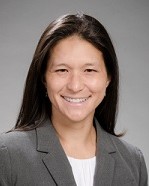
Mia Hagen, MD
CLEAR Center Pilot & Feasibility Awardee 2020
Project Title: A randomized controlled pilot trial of postoperative hip bracing after arthroscopic osteoplasty and labral repair for femoroacetabular impingement syndrome (FAIS)
Current Status: Complete
Project Description
Dr. Mia S. Hagen is an Assistant Professor within the University of Washington’s Department of Orthopaedics and Sports Medicine, the Surgical Director of the Sports Medicine Center at Husky Stadium, serves as a team physician for the University of Washington Husky Athletics, and one of the three recipients of the 2020-2021 CLEAR Center Pilot & Feasibility Awards.
Dr. Hagen’s project uses a randomized controlled trial to test the cited benefits of postoperative hip bracing on short term patient reported pain scores, validated hip-specific pain scores, and physical exam findings of hip flexor tendonitis. Dr. Hagen and her team have completed subject recruitment for this study and are awaiting final follow up which should be complete in November 2023. They will then perform data analysis and submit the findings to the national sports medicine conference and high impact journal.
Hip arthroscopy for treatment of femoroacetabular impingement syndrome (FAIS) involves reshaping of the osseous sources of impingement (“osteoplasty”) and repair of impingement-associated labral tears. The diagnoses of FAIS and the incidence of hip arthroscopy have both increased dramatically in the last 20 years in the US. Despite the increasing incidence of hip arthroscopy in the US, on a recent review Dr. Hagen and her team found few evidence based studies on postoperative care. A particular area of debate is the use of postoperative hip braces, which can be relatively expensive.
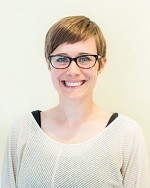
Christine Rehwald, MD
CLEAR Center Pilot & Feasibility Awardee 2020
Project Title: Spinal infection: assessing incidence, comorbidities, and costs using local and national databases to inform patient management and resource use strategies
Current Status: Complete
Project Description
Dr. Christine Rehwald is an acting Assistant Professor in the University of Washington Department of Radiology and one of three recipients of the 2020-2021 CLEAR Center Pilot & Feasibility Awards.Dr. Rehwald’s project addressed the effect of comorbidities on spinal infection (SI), singly and in combinations, and the associated inpatient/outpatient costs using patient-level data.
Spinal infection (SI) is associated with significant morbidity and costs to the healthcare system. Annual incidence of SI has been increasing, with proposed links to opioid use disorder within Washington State. Other risk factors for developing SI include diabetes mellitus (DM), chronic kidney disease, endocarditis, chronic liver disease, malnutrition, HIV infection and recent spine surgery.
Dr. Rehwald and her team assessed clinical risk factors and test their impact on SI management costs. They aimed to better identify and specify comorbidities; to evaluate inpatient, emergency, and outpatient costs; and to develop predictive cost-related models to guide future patient-management strategies and resource planning for SI patient care.
Her work has resulted in a manuscript titled, “Assessing comorbidities and costs to inform patient management and resource use strategies.”
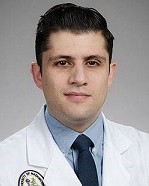
Jonah Hebert-Davies, MD
CLEAR Center Pilot & Feasibility Awardee 2019
Project Title: A Randomized Controlled Pilot Study Evaluating the Efficacy of Early Glenohumeral Cortisone Injection in Patients with Shoulder Stiffness Following Proximal Humerus Fractures
Current Status: Complete
Project Description
Dr. Jonah Hebert-Davies is an Assistant Professor in the University of Washington Department of Orthopaedics and Sports Medicine and one of two recipients of the 2019-2020 CLEAR Center Pilot & Feasibility Awards.
Dr. Hebert-Davies’ Pilot & Feasibility Award project addressed the the feasibility of performing a large-scale trial to address post traumatic decreased range of motion in patients with proximal humerus fractures.
Shoulder stiffness is a common complication of proxmial humerus fractures and has the potential to seriously impact daily function. Standard treatment includes physical therapy, home exercise, and “watchful waiting” to see if symptoms improve with time. In this study, Dr. Hebert-Davies and his team examined whether or not steroid injections are a viable treatment option for this type of injury. This study conducted pilot work to determine the feasibility of conducting a large scale multi-centered randomized trial to evaluate the viability of steroid injections as a treatment option for shoulder stiffness following proximal humerus fracture.
Patients participating in this study were randomized to receive an ultrasound-guided intra-articular injection with lidocaine or an ultrasound-guided intra-articular cortisone injection. The team examined clinical and functional outcomes at multiple timepoints to determine the feasibility of studying this treatment on a larger scale.
The final data collection suggests the potential to expand the size of the study for future research.

Aaron Bunnell, MD
CLEAR Center Pilot & Feasibility Awardee 2019
Project Title: Surface Electromyography in Recovery and Rehabilitation of Upper Extremity Function
Current Status: Complete
Project Description
Dr. Aaron Bunnell is an Assistant Professor in the University of Washington Department of Rehabilitation Medicine and one of two recipients of the 2019-2020 CLEAR Center Pilot & Feasibility Awards.
Dr. Bunnell’s Pilot & Feasibility Award project is entitled, Surface Electromyography in Recovery and Rehabilitation of Upper Extremity Function, and will first optimize the function of a portable surface electromyography (sEMG) device to monitor improvements in upper extremity function and then develop a virtual gaming platform for rehabilitation of upper extremity function, using sEMG signals as the input.
Upper extremity weakness can be debilitating, often interfering with patients’ ability to work and perform basic activities. Causes for upper extremity weakness vary widely but can include atrophy from disuse, stroke, or trauma. After treating underlying causes of upper extremity weakness, recovery of strength and function is highly dependent on completion of prescribed therapy. However, rates of completion of therapy regimes remain low, as home exercises are often repetitive and boring, and access to specialized therapists is limited.
Virtual reality- and gaming-based therapies are gaining popularity in treatment of conditions like upper extremity weakness, but not all patients are able to use them, as some patients are too weak to trigger traditional virtual reality systems to complete the therapy program. Surface electromyography (sEMG) may offer a solution to this issue, as low levels of muscle activation can be detected, allowing more patients the opportunity to benefit from virtual reality therapies.
Of his work, Dr. Bunnell says, “the CLEAR Center Pilot & Feasibility funds and mentorship will help advance our team’s work using surface EMG to detect nascent muscle signals after severe neurologic injury and allow patients to use these signals to move within a virtual reality therapeutic gaming environment with the aim of improving strength and speeding recovery. I am grateful for the opportunity to work with CLEAR and improve recovery after neurologic injury.”
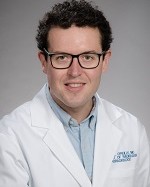
Michael O'Reilly, MBBCh
CLEAR Center Senior Fellow 2019-2020
Project Title: Rates of Vertebral Augmentation for the Treatment of Osteoporotic Vertebral Compression Fractures among the Commercially Insured
Current Status: Complete
Project Description
Dr. Michael O’Reilly is a Senior Neuroradiology Fellow in the University of Washington Department of Radiology. Dr. O’Reilly is training in diagnostic neuroradiology and interventional radiology with a focus on health services research and comparative effectiveness analysis in order to identify the most effective ways to organize, manage, finance, and deliver high quality care while improving patient safety.
Dr. O’Reilly’s study, Rates of Vertebral Augmentation for the Treatment of Osteoporotic Vertebral Compression Fractures among the Commercially Insured is a retrospective cohort analysis of patients with osteoporotic vertebral compression fractures in the IBM MarketScan® Research Database of Americans with employer-provided health insurance. For his study, Dr. O’Reilly analyzed a cohort of patients who had thoracic and lumbar osteoporotic fractures and calculcated the proportions who were treated with vertebroplasty and kyphoplasty, collectively termed vertebral augmentation. This study provided data on a notable knowledge gap regarding vertebral augmentation in younger patients, particularly with regard to kyphoplasty. Interim results of this study indicate that vertebral augmentation is highly utilized in this younger patient cohort, with rates of kyphoplasty in particular increasing in recent years.
Dr. O’Reilly will perform further analyses on this cohort of patients with osteoporotic fractures in the IBM MarketScan® Research Database that will compare healthcare utilization, including opioid use, complication rates, and spine surgeries, and costs among patients who did and did not receive vertebral augmentation.
Other projects of Dr. O’Reilly’s include a study to determine the prevalence of reported findings on lumbar spine imaging examinations performed subsequent to a patient’s index visit to their primary provider during the LIRE study, as well as a project to assess the materials available to create radiographic high-fidelity anthropomorphic phantoms using 3D printing and common and commercially available castable materials.
Publication:
Gold LS, O’Reilly MK, Heagerty PJ, Jarvik JG. Complications and healthcare utilization in commercially-insured osteoporotic vertebral compression fracture patients: a comparison of kyphoplasty versus propensity-matched controls. Spine J. 2021 Aug;21(8):1347-1354. doi: 10.1016/j.spinee.2021.03.025. Epub 2021 Mar 26. PMID: 33781968; PMCID: PMC8349787.
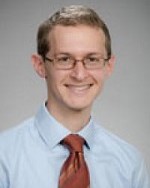
James Andrews, MD
CLEAR Center Pilot & Feasibility Awardee 2018
Project Title: Identifying Aging-related Sarcopenia as a Novel Risk Factor for the Development of Osteoarthritis in Older Adults – a Population-Based Approach
Current Status: Complete
Project Description
Dr. James Andrews is an Assistant Professor in the University of Washington Department of Medicine Division of Rheumatology and was one of two recipients of the inaugural CLEAR Center Pilot & Feasibility Awards.
Dr. Andrews’ Pilot & Feasibility Award project leveraged the NIH/NIA-funded Health, Aging, and Body Composition (Health ABC) dataset to identify novel risk factors for the development of osteoarthritis among older adults, such as sarcopenia (low lean mass and grip strength) and serum biomarkers. Dr. Andrews and his team explored the relationship between sarcopenia and osteoarthritis, as well as examined the potential for sarcopenia to predict development of osteoarthritis in the future. Understanding the relationship between sarcopenia and development of osteoarthritis in older adults will pave the way for identification of patients at greatest risk for osteoarthritis and provide novel data on how osteoarthritis is developed that will ultimately promote interventional studies designed to prevent osteoarthritis and reduce disability for millions of at risk older Americans.
Additional Funding Received
Sarcopenia as a Predictor of Functional Outcomes of Acute Illness in Older Adults with Dementia
National Institute on Aging
1R03AG063168-01
4/15/2019 – 1/31/2021
The overall goals of this project are to evaluate identify sarcopenia (low muscle mass and strength) as a key risk factor for hospital-associated ADL in older adults with dementia and to support Dr. James Andrews’ transition to becoming an independent physician-scientist focused on dementia research and the prevention of physical disability among older adults with dementia.
Sarcopenia as a Predictor of Hospital-Associated Disability in Older Adults
National Institute on Aging
5K23AG058756-02
8/15/2018 – 4/30/2023
This project’s primary research objective is to test the central hypothesis that sarcopenia is a risk factor for hospital-associated activity of daily living (ADL) disability among older adults.
National Institute on Aging
1K23 AG058756-03S1
08/15/2020-04/30/2021
This administrative supplement focuses on the use of bedside ultrasound measures of skeletal muscle architecture and functional outcomes of hospitalization in older adults with AD/ADRD.
National Institute on Aging
1R03AG063168-01
08/15/2020-04/30/2021
This administrative supplement focuses on functional outcomes of hospitalization for COVID-19 in adults with and without AD/ADRD.
Publication
Andrews JS, Gold LS, Nevitt M, Heagerty PJ, Cawthon PM. Appendicular Lean Mass, Grip Strength, and the Development of Knee Osteoarthritis and Knee Pain Among Older Adults. ACR Open Rheumatol. 2021 Aug;3(8):566-572. doi: 10.1002/acr2.11302. Epub 2021 Jul 10. PMID: 34245226; PMCID: PMC8363849.

Scott Telfer, EngD
CLEAR Center Pilot & Feasibility Awardee 2018
Project Title: Blood Flow Restriction for Anterior Cruciate Ligament (ACL) Rehabilitation
Current Status: Complete
Project Description
Dr. Scott Telfer is a Research Assistant Professor in the University of Washington Department of Orthopaedics and Sports Medicine and was one of two recipients of the inaugural CLEAR Center Pilot & Feasibility Awards.
Dr. Telfer’s project involved a cross-sectional study designed to test the acceptability of blood flow restriction training for those undergoing rehabilitation from ACL reconstruction surgery. It also investigated the biomechanical effects of the blood flow restriction training rehabilitation technique.
Rehabilitation after surgical reconstruction of the ACL aims to re-establish the function of the knee. Effectively building muscle strength requires exercises with high resistance loads, but the joint stress and risk of further injury make these types of activities inappropriate and unsafe for those rehabilitating after ACL reconstruction surgery. Personalized blood flow restriction training is a technique where the blood flow to the muscles being exercised is controlled by a pressure cuff to a predefined level, and has been shown to increase strength while exercising with significantly lower loads. Dr. Telfer’s CLEAR Pilot & Feasibility project compared 2 groups of 20 participants each: one group of individuals underwent rehabilitation after ACL reconstruction, and the second group was an age-, weight-, and sex-matched control group. Both groups completed personalized blood flow restriction training and had their movements and muscle activation monitored. Participants were also asked to complete post-exercise surveys rating the difficulty and discomfort associated with each exercise they performed.
Publication
Telfer S, Calhoun J, Bigham JJ, Mand S, Gellert JM, Hagen MS, Kweon CY, Gee AO. Biomechanical Effects of Blood Flow Restriction Training after ACL Reconstruction. Med Sci Sports Exerc. 2021 Jan;53(1):115-123. doi: 10.1249/MSS.0000000000002437. PMID: 32694365; PMCID: PMC8191295.
